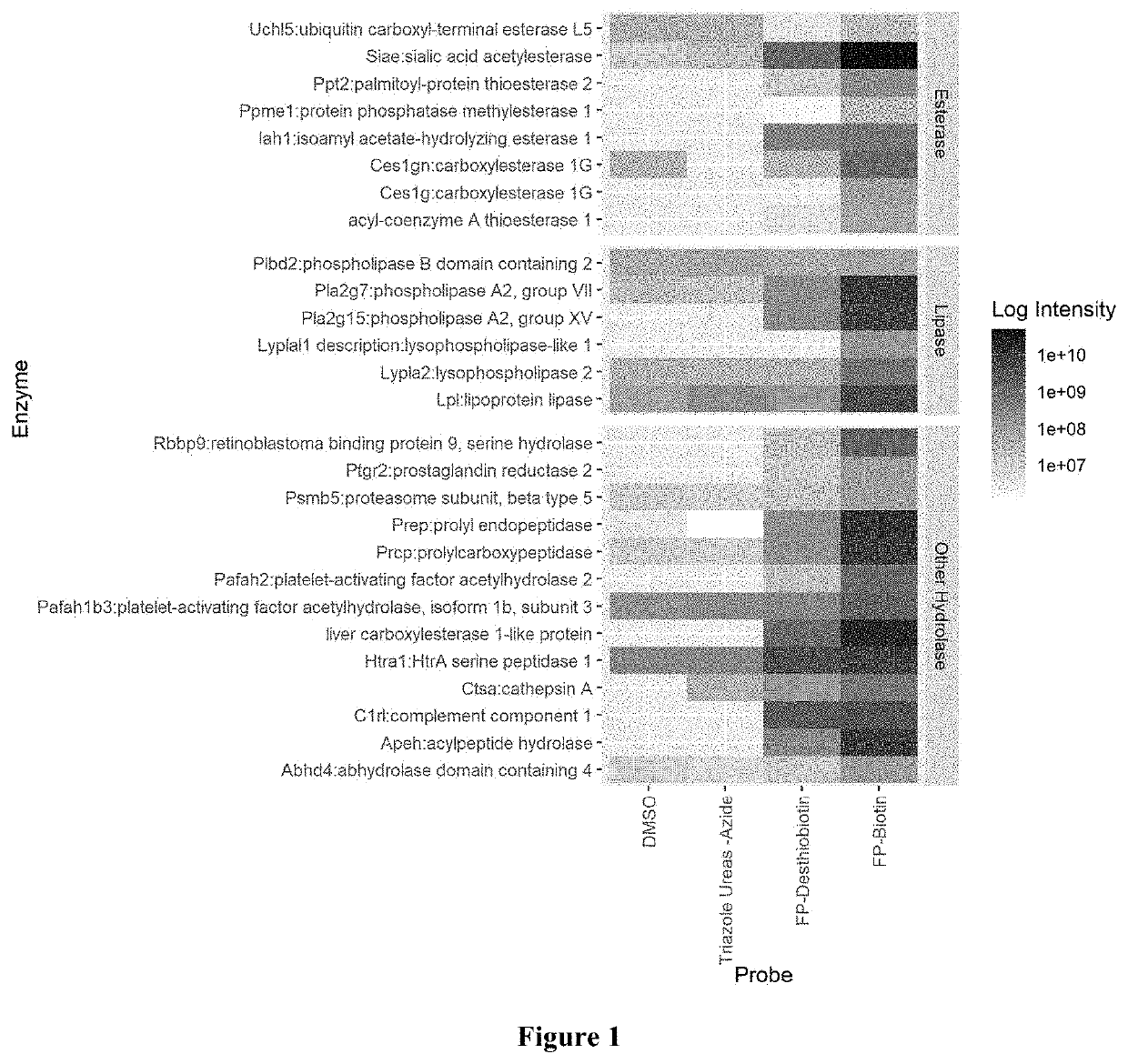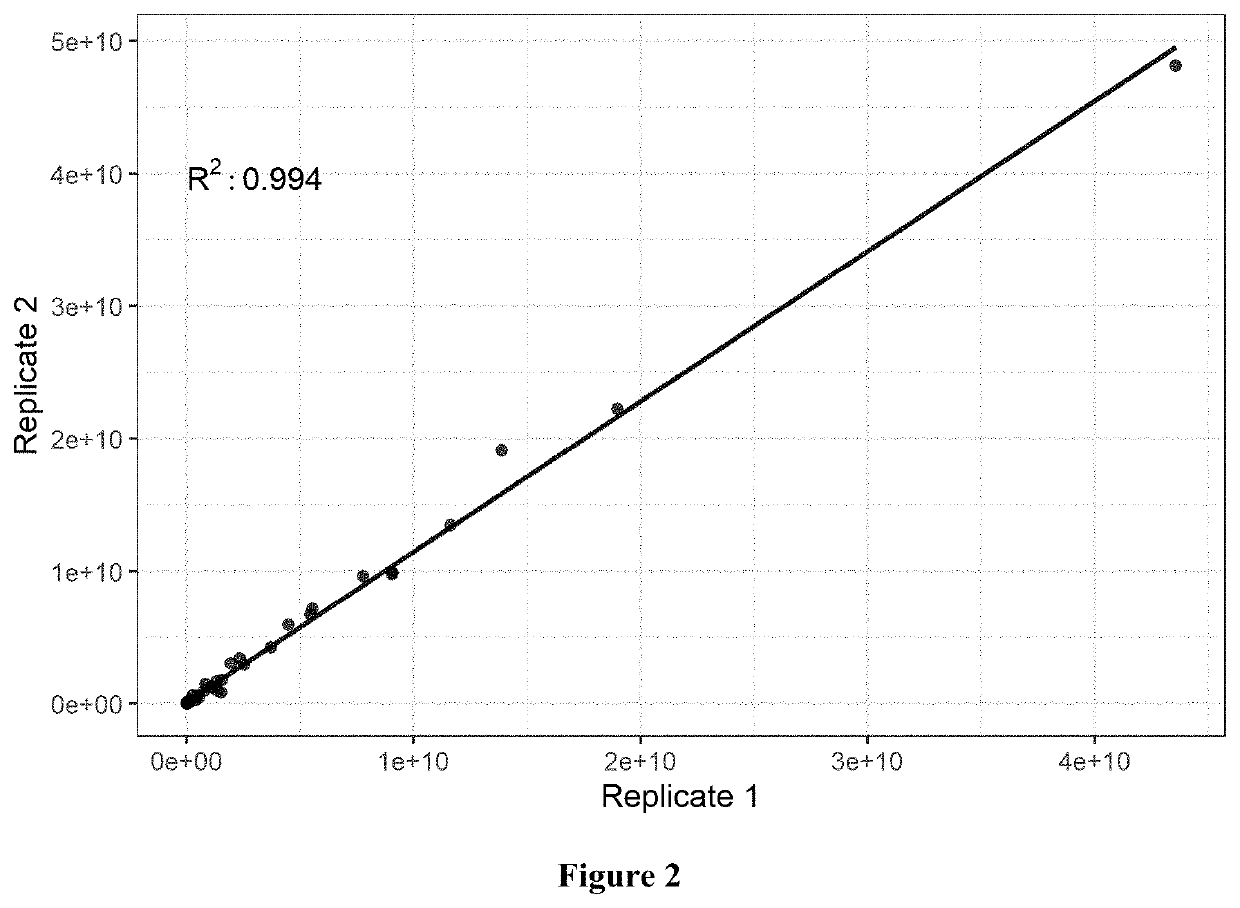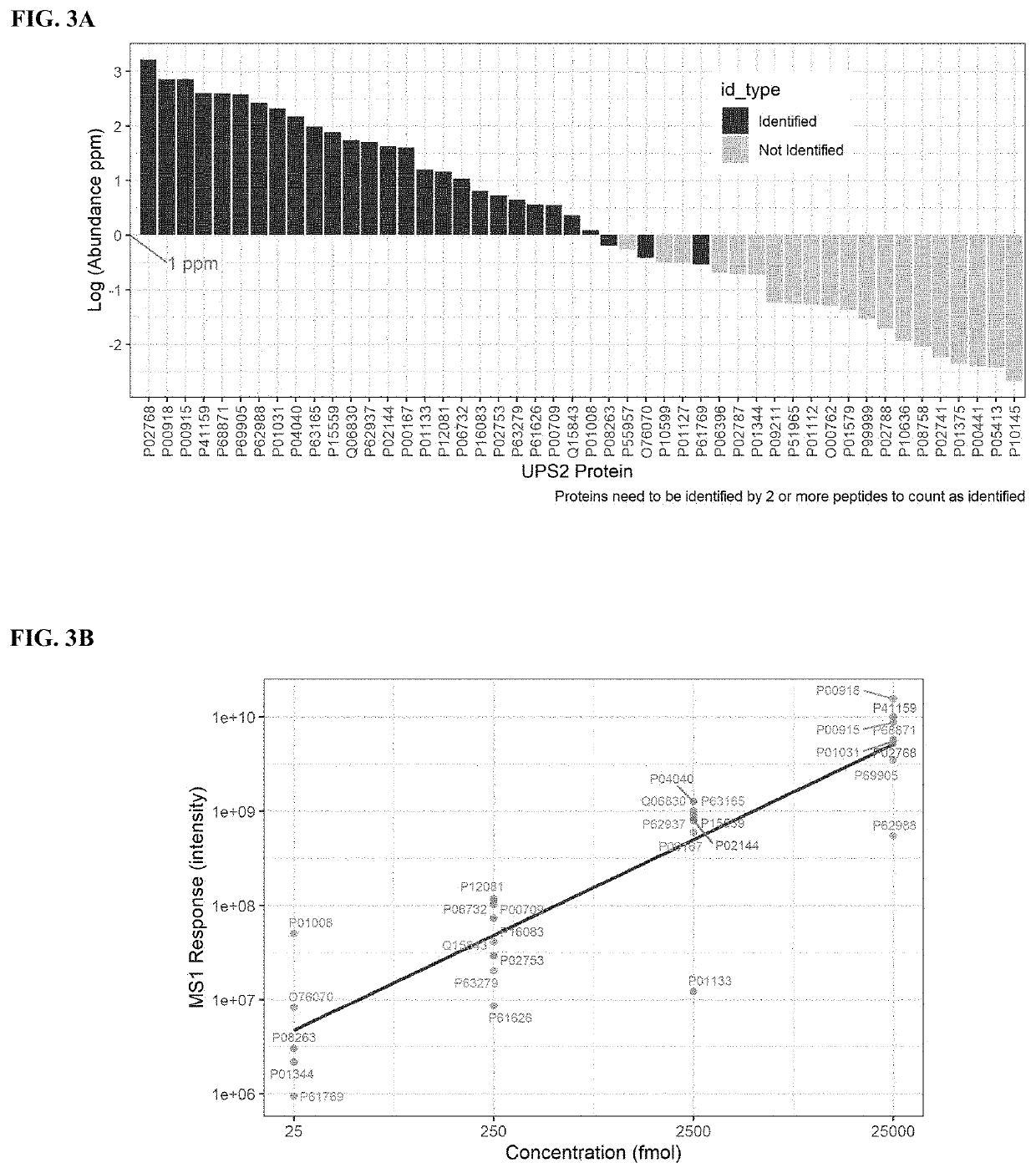Serine hydrolase profiling assay in biotherapeutics
a profiling assay and serum hydrolase technology, applied in the field of serum hydrolase profiling assay in biotherapeutics, can solve the problems of limiting the current proteomics strategy, unable to tell the whole story of polysorbate degradation, and huge analytical gaps
- Summary
- Abstract
- Description
- Claims
- Application Information
AI Technical Summary
Benefits of technology
Problems solved by technology
Method used
Image
Examples
example 1
Based Chemical Proteomics Approach
[0053]Harvest cell culture fluid (HCCF) and products from the first ion-exchange column (IEXP)) in downstream purification were used for activity-based proteomics testing. HCCF from Chinese hamster ovary (CHO) cells from fed-batch production of mAbs was diluted with 50 mM Tris (pH 8) to 2 mg / mL. IEXP samples were diluted to 10 mg / mL. Fluorophosphonate (FP)-containing probes were dissolved in dirnethyl sulfoxide (DMSO) to make 0.1 mM stock solution. For each HCCF or IEXP sample (500 μL), 20 μL of chemical probes or control DMSO was added to make a final mix concentration of 2 μM. All samples were incubated at room temperature for 2 hours with constant mixing on a rotator. After reaction, to each sample was added 1000 μL of ice-cold methanol / acetone (50:50) on ice for 30 minutes to remove free probes. The precipitated proteins were collected via centrifugation at 20,000 g for 15 minutes at 4° C. The pellet was washed with 1 mL of ice-cold methanol / ace...
example 2
-Based Traditional Proteomics Approach
[0055]For abundance-based proteomics approach, the sample preparation followed the native digestion method18. Briefly, one mg of mAb process intermediate samples from purification steps were incubated with trypsin (400:1, weight to weight) after pH adjust with 1M Tris-HCL for overnight digestion at 37° C. To determine the limit of detection of the traditional proteomics workflow, UPS2, composed of 48 human proteins (6,000 to 83,000 Da) within a concentration range from 250 amol to 25 pmol with 8 proteins in each group, was spiked in a mAb drug substance before sample preparation. After digestion, samples were denatured and reduced at 80° C. for 10 min with 2 μL of 50 mg / mL DTT. A large portion of undigested mAb was removed by centrifugation at 11,000 g for 10 min. Three microliters of 20% FA were added to the supernatant before LC-MS analysis.
[0056]LC-MS was performed on an ACQUITY UPLC H-Class system (Waters, Milford, Mass.) coupled with a Q Ex...
example 3
s Identification
[0057]MS raw data was searched against Merck internal CHO KL fasta database customized with mAb and spiked-in recombinant protein sequences using Proteome Discoverer 2.2. The precursor mass tolerance was set at 15 ppm and fragment mass tolerance at 0.02 Da. The dynamic modification was set for Met oxidation and maximum 3 modification. The target FDR for peptide identification was 0.01 and protein identification filter required at least 2 peptide identification. The summed MS1 peak area from all identified peptides were used for protein relative abundance estimation. In the activity-based proteomics approach, proteins with at least 4-fold enrichment compared to those from samples incubated with only DMSO were considered potential active serine hydrolases.
Method Development and Evaluation of Activity-Based Chemical Proteomics Approach for Active Serine Hydrolases Profiling in Biologics Cell Culture
[0058]To establish the activity-based chemical proteomics approach, two ...
PUM
| Property | Measurement | Unit |
|---|---|---|
| Electrical conductance | aaaaa | aaaaa |
| Substance count | aaaaa | aaaaa |
| Hydrophobicity | aaaaa | aaaaa |
Abstract
Description
Claims
Application Information
 Login to View More
Login to View More - Generate Ideas
- Intellectual Property
- Life Sciences
- Materials
- Tech Scout
- Unparalleled Data Quality
- Higher Quality Content
- 60% Fewer Hallucinations
Browse by: Latest US Patents, China's latest patents, Technical Efficacy Thesaurus, Application Domain, Technology Topic, Popular Technical Reports.
© 2025 PatSnap. All rights reserved.Legal|Privacy policy|Modern Slavery Act Transparency Statement|Sitemap|About US| Contact US: help@patsnap.com



